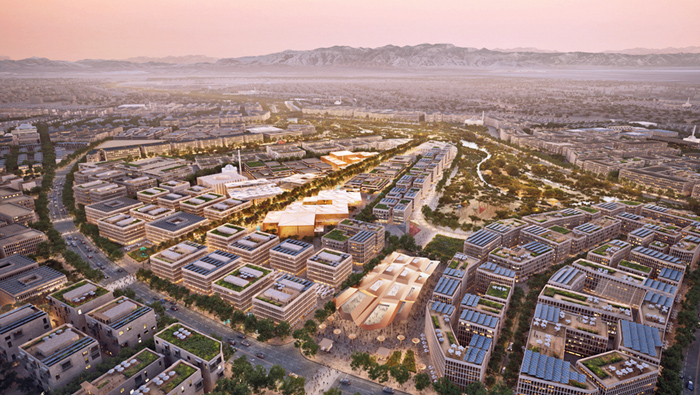
MUSCAT: The recently-launched Sultan Haitham City is expected to set a new benchmark in smart and sustainable city development which is expected to be a boon for the future generations and benefit all segments of society.
Themed “Treasure the Future”, Sultan Haitham City will be built in Wilayat of Seeb and will showcase 12 global standards of quality of life and welfare.
The project will cover an area of approximately 15 million square metres, with a focus on utilising green spaces estimated to be 2.9 million square metres. The city will house 100,000 residents and will have 20,000 residential units of different styles.
With emphasis on affordable costing, advanced integrated facilities and modern lifestyles, “the launch of the City is the beginning of a long-term project aimed at urbanisation of governorates across the Sultanate of Oman,” according to Zaina Al Harthy, Director at the National Program for Investment and Exports Development (Nazdaher).
Speaking to Times of Oman’s sisterly radio channel Al Shabiba, Zaina said: “The proposed city will serve as an example of a planned and sustainable city in the region. In the future, similar projects will be launched in the rest of the governorates of the Sultanate of Oman with the aim of creating integrated cities that are sociable and suitable for all segments of society so that everyone can lead a good quality of life.”
Engineer Fuad Al Kindi, Chairman of Oman Society of Engineers, said: “The name, Sultan Haitham City, carries a lot of significance and we all are confident that once it comes up, it will reflect the name in a befitting manner. The location of the city, which is near the Al Baraka Palace in the Wilayat of Seeb, symbolises the importance of the project. It is a pioneering project that will serve sustainable development and benefit citizens.”
Engineer Fuad added: “The transport network in the proposed Sultan Haitham City has been analysed thoroughly and plans are in place to shape it according to needs of the future. Lot of studies and planning has been done to ensure the best services, development, human well-being, health, and quality of life in the city.”
Fahad Al Ismaili, Chairman of Mysaaf Group, said: “The proposed Sultan Haitham City project will be the starting point for future cities in the country and be an example of sustainability. It simulates modern life and epitomises the aspirations of young people in Oman. The futuristic city will guide us to development and is a real estate renaissance.”
The proposed Sultan Haitham City is the fruitful outcome of the comprehensive transformation approach espoused by the Ministry of Housing and Urban Planning. It envisages transition into sustainable urban development that benefits thriving communities through the implementation of national strategic projects for urban development in line with Oman Vision 2040.
The residential housing units range between separate villas, semi-attached villas, townhouses and flats. The housing units will be distributed over 19 integrated residential neighbourhoods, supplied with various facilities and services to meet the needs of the residents. It will have 24 mosques and a grand mosque. The city will also have 11 health facilities, including two health centres to cater to the needs of 20,000 patients and another set of six health centres with a capacity to serve 10,000 patients.
The city will have a referral hospital with a capacity of 1,200 beds, a private hospital and a centre to serve persons with disability and elderly people. The city will have 39 government and private schools covering all levels of education. The city welcomes all segments of society, with their diverse social and cultural backgrounds. It offers all segments an easy access to its social and recreational facilities, thereby consolidating the bonds of belonging and cultural diversity.
Strategic locations for community facilities have been carefully selected to allow residents access them with complete ease. The strategy allows residents to jointly use public facilities, such as parking lots, playgrounds and parks, and contributes to achieving optimal use of spaces and amenities in the heart of the metropolis.
The design of the new city’s external areas is inspired by the natural surroundings, with options for utilising the natural shade of trees during the daytime, which will be much in harmony with the urban structures. The overall idea is to provide natural outdoor spaces in the vicinity of buildings and well-designed streets.
The city has also been designed to raise the quality of life by optimising the use of solar energy as a sustainable source. In this setup, waste energy production systems and wastewater outputs will act as key factors in the protection of natural resources. The outcome will be the control of waste and the recycling of materials.
With its fascinating and captivating designs, the city promises transition into a future of happiness and prosperity. Yet, its concepts will never miss out on the country’s heritage. While it builds a vision for the future of generations that celebrate modern life, it will also build solid grounds for harmony among cultural groups.